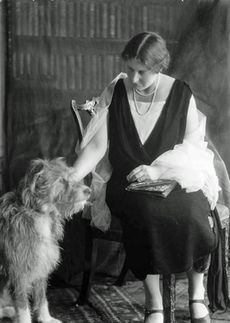Herbert Brereton Baker facts for kids
Quick facts for kids
Herbert Brereton Baker
|
|
|---|---|

Baker in 1917
|
|
| Born | 25 June 1862 Livesey, England
|
| Died | 27 April 1935 (aged 72) Gerrards Cross, England
|
| Alma mater | Balliol College, Oxford |
| Awards |
|
| Scientific career | |
| Fields | Inorganic chemistry |
| Institutions | |
| Doctoral advisor | Harold Baily Dixon |
| Notable students | |
Herbert Brereton Baker (born June 25, 1862 – died April 27, 1935) was an English scientist. He was an inorganic chemist, which means he studied chemicals that don't mainly contain carbon. He was known for his amazing experiments on how dryness affects chemicals.
Contents
A Chemist's Life
Early Life and Schooling
Herbert Brereton Baker was born in Livesey, England. He was the second son of John and Caroline Baker. He went to school in his local area and later attended Manchester Grammar School.
He earned a special scholarship to attend Balliol College, Oxford University. There, he studied very hard and earned a top degree. He also became a demonstrator, helping to teach others.
Teaching and Research Career
In 1894, Herbert Baker became a chemistry teacher at Dulwich College. He spent about twenty years teaching and doing scientific research. For a short time (1902-1904), he was even the headmaster of Alleyn's School in Dulwich.
During this time, he was chosen to give lectures on inorganic chemistry at Christ Church, Oxford University. In 1912, he became a Professor at Imperial College London. He led the Chemistry Department there until he retired in 1932.
Amazing Drying Experiments
Professor Baker did important studies on how being very dry affects chemicals. He also looked at how moisture helps chemical reactions happen. He showed that some chemicals, like dry carbon and phosphorus, won't catch fire in dry oxygen.
He also found that dry ammonia and hydrogen chloride won't mix together. And dry ammonium chloride and calomel can turn into gas without breaking apart. He even claimed that making chemicals super dry could make their boiling point much higher. However, other scientists found it hard to get the same results.
Working for the War Effort
During World War I, Professor Baker became a science advisor to the War Office. He worked with his father-in-law, who was a glassmaker. Together, they helped create a special strong glass. This glass was used for the 'horns' on contact submarine mines.
A company called Whitefriars Glass made 600,000 of these glass horns. Each one was tested carefully in very hot and cold temperatures. They were also dropped to make sure they were strong enough.
Herbert Baker married Muriel Powell on March 21, 1905. Muriel was the daughter of a glassmaker named Harry James Powell. They had two children, Ronald and Audrey. Herbert passed away on April 27, 1935, in Gerrards Cross. His son Ronald died before him.
Muriel Baker had also studied chemistry at Oxford University. She and Herbert worked together on studying the oxides of nitrogen. They even published a scientific paper together. When Herbert moved to Imperial College, they continued their research in a lab at their home.
Awards and Recognition
Herbert Baker received many honors for his scientific work. In 1917, he was made a Commander of the Order of the British Empire. In June 1902, he became a Fellow of the Royal Society, which is a very important group of scientists.
In 1923, he received the Davy Medal for his research on completely drying gases and liquids. He also received the Chemical Society's Longstaff Medal in 1912. In 1926, he was chosen to be the president of the Chemical Society.


